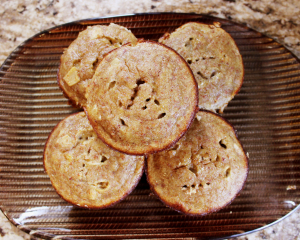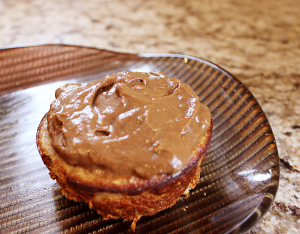
Monday, November 2, 2015
Lupus Transformation

Tuesday, August 25, 2015
Explaining Lupus to Just About Anyone How to Explain Lupus to Family,Friends, Colleagues, Children and Acquaintances
Explaining Lupus to Just About AnyoneI know we’ve all heard it. Those five little words of no more than three or four letters each. “But you don’t look sick.”
Honestly, one of my biggest fears is that people will think I’m ‘shopping for sympathy’ or ‘pity-seeking’. This is simply not the case. But, I do want people to understand because it affects what I am able to do. My abilities can change on a daily basis – good days, bad days, really bad days, times when I’m flaring on maximum overdrive and times when I almost seem ‘normal’ – if there is such a thing.
I have found myself needing to explain Lupus in a variety of settings: with family and friends, to my third grade students, and even in social or professional situations. Each explanation may look different depending on who the audience is, what they need to know, and why they need to know it. I would like to share what it might look like in each of these scenarios. It’s never easy, but with a plan of action tailored to fit a variety of circumstances we can be prepared to explain our “individual” lupus accurately, concisely, and authentically.
Lupus is an unpredictable and misunderstood disease that attacks different parts of the body. It is challenging to identify, tough to live with, and an obstacle to address and treat.
Lupus is an autoimmune disease where the body’s immune system becomes hyperactive and attacks normal, healthy tissue. This causes symptoms such as swelling and inflammation, and damages the joints, skin, blood, heart, brain, kidneys, lungs, bones, nervous system, etc. Lupus can attack any organ or part of the body.
When the immune system is functioning properly it makes proteins called antibodies in order to battle and safeguard against antigens such as bacteria and viruses. With lupus the immune system is not able to tell the difference between antigens and healthy cells. This leads the immune system to attack healthy cells – not merely antigens – inducing swelling, discomfort, and tissue damages.
According to the Lupus Foundation of America (LFA), 1.5 to 2 million Americans have some form of lupus. The disease has an effect on both men and women, however, women are diagnosed 9 times more often then men. Lupus is usually diagnosed between the ages of 15 and 45.
Other risk factors include exposure to sunlight, some prescription medications, infection with Epstein-Barr virus, and exposure to certain chemicals.
Thursday, August 20, 2015
ALL TREATMENTS
Saturday, August 8, 2015
What to Do About Lupus Hair Loss

If you are among the half of all people with systemic lupus who struggles with this problem, here are some ideas about what you can do about it:

Last resort: cosmetic surgery. For extreme and permanent hair loss, stretching the remaining hair to cover what’s been lost may be an option, or even transplanting hair from another part of the scalp.
FIVE EMPOWERING HABITS
Originally posted on Lupus In Color:
Five Empowering Habits of the Lupus Warrior
1. Complain less and applaud more – Just because you are fighting a hard battle, you make a conscious choice to complain less about the fight and applaud your effort more to overcome the trials of lupus.
2. Speak well over yourself – Speaking to yourself in empowering ways removes the desire to stay still in the pain lupus brings. It also conditions your brain to see the brighter side instead of the hill you are climbing.
3.Be selective in your talk of your battles – Every battle that lupus puts you through is not worthy of discussion with yourself or others. Sometimes the lupus warrior just has to fight and not talk to stay focused on the win.
4.Understand it’s a bad day not a bad life – Lupus brings many difficult days, it doesn’t mean your life is worthless. It simply means you have to put on your battle gear and fight. After all, you’ve won every battle so far, that’s evident in the breath you just took.
5. Value yourself above all lupus issues – Yes, parts of you are broken, but that doesn’t mean you as a whole are broken. Lupus can damage your body, mind and spirit so, its up to you to work hard in keeping strong and keep high value in self worth. You are a warrior that never quits, say it to yourself daily and the warrior will see and focus on your strength, bravery, faith and love beyond anything lupus can bring.
#LupusInColor
Friday, August 7, 2015
About Lupus
In lupus, something goes wrong with your immune system, which is the part of the body that fights off viruses, bacteria, and germs (“foreign invaders,” like the flu). Normally our immune system produces proteins called antibodies that protect the body from these invaders. Autoimmune means your immune system cannot tell the difference between these foreign invaders and your body’s healthy tissues (“auto” means “self”) and creates autoantibodies that attack and destroy healthy tissue. These autoantibodies cause inflammation, pain, and damage in various parts of the body.

Thursday, August 6, 2015
Weight Gain and Lupus.
 Many lupus patients are prescribed Prednisone, a steroid that calms the immune system. Unfortunately, Prednisone comes with some side effects that lead to weight gain. Many patients experience an increased appetite and fluid retention, which makes the face and other body parts appear puffy. Here are some tips to combat these side effects and avoid weight gain.
Many lupus patients are prescribed Prednisone, a steroid that calms the immune system. Unfortunately, Prednisone comes with some side effects that lead to weight gain. Many patients experience an increased appetite and fluid retention, which makes the face and other body parts appear puffy. Here are some tips to combat these side effects and avoid weight gain.Wednesday, August 5, 2015
Almond Banana Loaf Recipe
Originally posted on One Step At a Time:
I’ve gotten a lot of positive response from my first recipe so I decided I’ll post them more often then once a month!
This week I’m sharing a very tasty, simple banana loaf recipe that I chose to make into mini muffins to have with my breakfast. You can also make these into healthy cupcakes with avocado icing that I’ll list below! :)
Ingredients:
- 2 ripe bananas
- 1 heaping cup of almond flour
- 1 1/2 tablespoons of raw honey
- 3/4 cup slivered almonds
Directions:
- Preheat oven to 350 F and lightly oil non stick pan
- In a large bowl, mash bananas
- In a separate bowl, whisk together eggs and add flour and honey
- Stir together almonds and mashed bananas
- Pour mixture into pan and bake for 25-30 minutes
Make into cupcakes with this chocolate avocado mouse icing!
- 1 tablespoon of organic raw cocoa powder
- 1 avocado
- 2 tablespoons or organic agave
- 1 tsp of raw honey
- I added 1 tablespoon of cashew milk to make it a little lighter, but this step is optional!
- Using a blender or food processor, blend the avocado until it is smooth
- Add choice of milk(optional) cocoa powder, agave and honey
- Whip until it reaches mouse-like substance
Directions:
Enjoy! Much love, Julia
Part 1: How to Read Your Lab Test: Urine

Originally posted on bloggingwarrior
As a patient with a chronic illness your doctor will collect many tests from you. One of them is a urine (pee) test. It is painless but peeing in the cup can be a bit awkward. Some questions that may go through your mind are: “Why is the doctor running this test?” and “What information are they getting from this test?” According to Webmd.com a urine test is done “to check for a disease or infection of the urinary tract…and to check the treatment of conditions such as diabetes, kidney stones, and a urinary tract infection (UTI), high blood pressure (hypertension), or some kidney or liver diseases.” The doctor may not think you have any of the physical issues listed above but may order the test as a part of routine lab work just to be sure there is nothing ‘brewing. It is important to note that each lab has a ‘normal range.’ This range will vary from lab to lab. When reading labs look at the range for that lab. These ranges will be listed next to your values. There are 10 common lab tests. They will be listed below with a short explanation.
Specific Gravity (SG)
There is not a normal or abnormal value for this test. Rather, it just lets the health care provider know how concentrated the urine is. SG ranges from 1.000- 1.035. 1.000 have a very concentration and 1.035 being more highly concentrated. This is important to your healthcare provider because if they are looking for something like protein in the urine (commonly found with kidney issues in lupus patients) a concentrated sample would give them the best sample.
pH
A pH is measured on a scale from 0-14. In urine your normal lab values will vary between 4.5-8.0 (I’ve seen lab values that go up to 9.0). A value of 4.5 means that the urine is more acidic and a 9.0 would mean that the urine is very alkaline. It is important to note that these values will vary based on the time of day. The pH is important because the kidneys help maintain the body’s acid-base balance (pH). When the body’s pH is out of balance it is often a reflection of disease. The kidney’s are a powerful way for the body to maintain homeostasis (bodily equilibrium)(www.boundless.com).
Protein
Protein is usually not in the urine. This type of protein is also called albumin. Albumin is a protein that is made in the liver and is used for growth, tissue repair and to remove excess fluid from the blood (http://bja.oxfordjournals.org). When protein shows up in urine consistently it may indicate that the kidneys are not working at an optimal level.
Glucose
Glucose (a sugar molecule) is normally not found in urine. “When glucose is present, the condition is called glycosuria”(www.labtestsonline.org). When the body can’t handle glucose properly it can get leaked into the urine.
Ketones
Ketones are generally not found in urine. They can occur when a person isn’t eating enough carbohydrates or when carbohydrates aren’t being used properly (www.labtestsonline.org).
Blood (Hemoglobin)
Hemoglobin is a protein that transports oxygen found inside red blood cells. The source cannot be identified when blood is found. For instance, your period can cause blood in urine as can hemorrhoids. Medications, smoking, and strenuous exercise can also cause hemoglobin to be in the urine (www.labtestsonline.org).
Leukocyte Esterase
Leukocyte esterase is an enzyme present in white blood cells. When this presents in urine it is an indication that there is inflammation in the urinary tract. Usually this indicates a kidney or bladder infection (www.labtestsonline.org).
Nitrite
Nitrite is a form of bacteria that is normally not present in urine. Its presence can indicate an urinary tract infection (UTI).
Bilirubin
Bilirubin is a waste product from the liver that is a component of bile. Bile aids your body in digesting it’s food. It is not present in the urine of a healthy individual. It shows up in various forms of liver disease- often before other symptoms are present (www.labtestsonline.org).
Urobilinogen
Urobilinogen is normally present in small amounts in urine. It is a by-product of bilirubin. When levels are out of range it can indicate an issue with the liver.
References:
http://bja.oxfordjournals.org/content/85/4/599.full
http://www.webmd.com/a-to-z-guides/urine-test?page=2
Living With Lupus: Tips that help me get by
Living with Lupus comes with a variety of issues that we must deal with daily. Some of these are physical and others are emotional. Over the years, I have found different products, foods, and activities that help me cope with both.
On the physical level, the joint pain and rashes are the most consistent and persistent problems. The malar face rash and body rashes that Lupus deals out can be hard to conceal and heal. I have went through a variety of skin creams in an effort to keep the malar rash at bay and easier to mask. Origins facial moisturizer and Rodan & Fields Soothe have by far been the best. In fact, Soothe has helped keep the rash under control enough that with make up, I can conceal it and make it almost undetectable! I also use it on the other body rashes I get from Lupus and it has been a huge help. Clinique’s Redness Solution face powder is designed to help cover redness in the skin so it has been a must in my make up regimen for years! I know these things might seem trivial to some, but for those of us suffering from these rashes, anything that makes us feel better is a plus.
The joint pain isn’t as easy to deal with. I try to stay away from pain killers as much as possible. Of course, there are times when I take them because I cannot find relief in any other way, but I always try alternatives first. Heating pads sometimes help and I usually start there. I also have found that by getting in the pool and moving, I can ease the pain. Simply moving in the pool, taking it slow and letting my body take the lead on what I can handle is the key to this type of therapy for me. Walking and bike riding when I am able are also beneficial. Any kind of light physical activity increases the joint flexibility and helps with pain relief. These things don’t work overnight though, so creating a routine is important to long term benefits.
Yoga has been my salvation in recent years. Not only is yoga good for you physically, but the mental and emotional benefits are enormous. I do gentle yoga in order to respect my body’s limitations. I still get the benefits of more demanding yoga, but without taxing my body in a way that would set me backwards. Kundalini Yoga is one of my favorites as it is a complete practice that involves meditation and focuses you on your intentions with each session. The meditation has been very therapeutic for me and keeps me centered. When I was getting ready to start chemo, my doctor asked what activities I did to help cope with Lupus. When I mentioned yoga, he was pleased and advised that even if I couldn’t do the physical portion of the practice that I should continue the meditation. He believes that it helps with the emotional aspect of dealing with chemo and I agree.
What we put in our bodies is also very important to our overall health and wellness. This is especially true when dealing with chronic illness. I do not eat fried foods and try to cook my own meals as often as possible. Going out to dinner is a treat in some ways but can create digestive turmoil as well. Not being in control of what goes into my food has caused me many a night of intestinal upset! We eat organic as much as possible, and include fruits / vegetables in our daily diet. Being aware of foods that can contribute to flares is also important. For example, I used to eat alfalfa sprouts quite often until I discovered that they were actually bad for Lupus and instigated flares. Eating like this can be more expensive, but we either pay for what we put in our bodies now or we will pay for it later.
While some of these might not work for you, I still wanted to share them because I know I am always on the lookout for ideas that don’t involve medication. I would love to hear from you about what works for you. I firmly believe that sharing is caring and though our Lupus community we can support one another in finding ways to make life better for us all.
Tuesday, August 4, 2015
My name is Chelsea Stark and this is my story.
 My new invisible companion is Systemic Lupus Erythematosis. I was diagnosed with it in year: 20015. But I had symptoms since I was 13 years old. I went to the doctor quite a few times and their answer to my problem was not lupus but juvenile arthritis. And treated me as such. My mother my grandmother all had Lupus My mother kept pushing them to test me every year. They tested me I keep popping positive for five of the six markers. Was never all six. So I just kept on going on with my treatment of juvenile arthritis. But never got the relief I wanted or needed.
My new invisible companion is Systemic Lupus Erythematosis. I was diagnosed with it in year: 20015. But I had symptoms since I was 13 years old. I went to the doctor quite a few times and their answer to my problem was not lupus but juvenile arthritis. And treated me as such. My mother my grandmother all had Lupus My mother kept pushing them to test me every year. They tested me I keep popping positive for five of the six markers. Was never all six. So I just kept on going on with my treatment of juvenile arthritis. But never got the relief I wanted or needed.Monday, August 3, 2015
Lupus-related pain is common, but there are medical and non-medical treatments that can help relieve your pain.
 f you’ve been diagnosed with lupus, you will probably have to cope with lupus-related pain at some point in the course of your disease. Ninety percent of lupus patients experience some joint or muscle pain, commonly caused by inflammation of the joints.
f you’ve been diagnosed with lupus, you will probably have to cope with lupus-related pain at some point in the course of your disease. Ninety percent of lupus patients experience some joint or muscle pain, commonly caused by inflammation of the joints.Types of Lupus Pain






